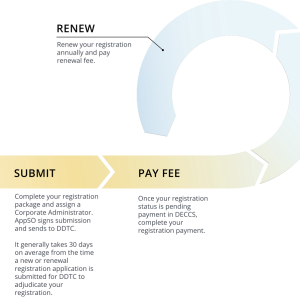
When commanders and first responders face a ticking clock, trustworthy AI for time-critical decisions becomes more than a slogan; it becomes mission equipment. In air defence, combat search and rescue, maritime interdiction or disaster response, an algorithmic recommendation can either shorten the OODA loop or inject dangerous doubt. This article lays out a practical playbook—rooted in current standards and defence policy—for designing, testing and operating AI that earns trust under pressure.
Key Facts
• NATO has adopted AI principles and updated strategy to accelerate responsible military adoption while guarding against adversarial use.[2]
• The U.S. DoD’s Directive 3000.09 (2023) requires appropriate human judgment over use of force and clarifies senior reviews for autonomous weapons.[3]
• NIST’s AI Risk Management Framework (AI RMF 1.0) provides a practical four‑function model—Govern, Map, Measure, Manage—to build trustworthy systems.[4]
• ISO/IEC 42001:2023 is the first AI management system standard; it operationalizes governance across the AI lifecycle.[5]
• The EU AI Act (2024) sets risk‑based obligations; many defence‑adjacent systems—surveillance, biometric ID, critical infrastructure—fall under high‑risk controls.[6]
Why trust collapses—or holds—when timing is critical
Time pressure magnifies small errors. Operators accept automation when it reduces uncertainty, not when it shortens latency alone. A radar track that flips from “unknown” to “hostile” must show how it reached that state, how confident it is, and what fallback exists if the sensor picture degrades. In short, trustworthy AI for time-critical decisions compresses the cycle from data to decision without compressing diligence.
Think of the mission loop as three clocks: sensing, reasoning and authorization. Sensors race to collect signal. Models race to classify and predict. Humans reserve the right to authorize effects. The architecture wins when these clocks stay synchronized and the operator sees both the answer and the rationale.
A practical trust stack you can ship
Data integrity: Validate provenance, check for drift, and label uncertainty. Use cryptographic signing for data pipelines that feed weapon‑adjacent decisions. Under time pressure, the system should highlight degraded inputs rather than hiding them.
Model assurance: Track versioned models with explicit hazard analyses. Apply red‑team tests, adversarial perturbations, and counterfactuals before deployment. Measure calibration, not only accuracy; a well‑calibrated model knows when it doesn’t know.
Human–machine teaming: Design “human‑on‑the‑loop” control for weapon systems and “human‑in‑the‑loop” for high‑consequence identification. Surface explanations in plain language and with simple evidence views—salient features, top alternative hypotheses, and confidence intervals.
Process and governance: Tie each capability to a documented use case, a commander’s intent and a go/no‑go checklist. This connects the technical artefact to legal, ethical and tactical constraints—exactly what military directives and international norms expect.
“Minimum Viable Trust” gates for the ops floor
Before any model aids a live decision, run four simple gates: (1) Identity—do we know the model and dataset lineage? (2) Integrity—are sensors healthy and authenticated? (3) Interpretability—can the operator explain the recommendation in one sentence? (4) Intervention—is there a safe, immediate override? If any gate fails, the system degrades gracefully to a vetted baseline.
Standards and policies you can adopt today
NIST AI RMF 1.0: Use the four functions to build a living assurance plan. NIST’s framework helps teams align governance with measurable risk controls. Its companion profile for generative AI extends these practices to modern models.[4],[7]
DoD Directive 3000.09: For U.S. programmes, the 2023 update clarifies senior reviews and codifies “appropriate levels of human judgment” over force decisions. It provides concrete criteria for autonomy in weapon systems, which programme offices can fold into test plans and readiness reviews.[3],[8]
NATO AI Strategy and principles: Allies commit to responsible military AI, focusing on reliability, governance and alignment with international law. Programmes that touch allied interoperability should reference these principles during design reviews.[1],[2]
ISO/IEC 42001:2023: Treat AI like aviation quality management. This AI‑specific management system standard binds policy to practice—roles, training, audits and continual improvement—so teams can prove due diligence in the field.[5]
EU AI Act (2024): Even when defence is exempt in parts, many dual‑use or civil‑military systems operate within the Act’s risk regime. Engineering to the stricter, high‑risk bar now will ease export, certification and partner acceptance later.[6]
Engineering for robustness and resilience
Design for adversaries: Assume data poisoning, spoofing and model evasion attempts. Use sensor fusion with cross‑checks, adversarial training for perception models, and runtime anomaly detection that triggers human review.
Quantify uncertainty: Show confidence bands, not only point predictions. Calibrated probabilities, abstentions and “request more data” prompts help an operator choose between speed and safety.
Fail operationally, not catastrophically: Build graceful degradation modes. If the ML classifier drops below a confidence threshold, hand control to rule‑based logic or a known‑good model; log the event and alert the supervisor.
Test like you fight: Include cluttered environments, rare edge cases and red‑team tactics in evaluation. Couple bench tests with field trials and capture operator feedback as quantitative acceptance criteria.
Governance that keeps pace with operations
Trust is not a one‑off certification; it is a practice. Establish a joint AI review board with engineering, legal, operations and safety. Track model changes like airworthiness certifications: each change logs evidence, test results and risk sign‑offs. Close the loop with after‑action reviews that feed new training data and update standard operating procedures.
For multinational missions, align documentation with allied norms. A programme that embraces trustworthy AI for time-critical decisions will move faster across borders because partners can audit how the system thinks and how the command retains authority.
Operational vignette: fast, transparent, reversible
An air‑defence operator receives an alert: a low‑flying contact shows hostile flight profile and emissions. The console lists the top three hypotheses with confidence, the key features that drove the score, and two validated playbooks: investigate with a drone team, or raise the ground‑based interceptor battery to ready. The commander sees the model version, the health of contributing sensors and the override button. She authorizes a reversible action: launch the drone team. Minutes later, additional evidence confirms the threat; the system escalates its confidence and presents a revised recommendation. Human judgment remains in charge, but the machine earns its keep by explaining itself quickly.
That is the core of trustworthy AI for time-critical decisions: speed with context, authority with accountability, and automation that supports rather than supplants command.
Where to go next
For a concrete view of autonomy at the tactical edge, read our analysis of the UK’s plan to field AI‑enabled drone swarms and the integration challenges that follow.[1] Then, map your own programme to NIST’s functions and log which controls you can evidence today. Finally, align your governance with NATO principles and ISO/IEC 42001 so partners can verify your approach without friction.
Bottom line: You can ship faster by designing for trust from the start. When seconds matter, engineering for clarity, reversibility and oversight pays the highest operational dividend.
References
- [1] Internal: “UK to field AI drone swarms – analysis” — Defence Agenda. https://defenceagenda.com/uk-to-field-ai-drone-swarms-analysis/
- [2] NATO — News release on revised AI Strategy (10 July 2024). https://www.nato.int/cps/en/natohq/news_227234.htm
- [3] U.S. Department of Defense — Directive 3000.09 “Autonomy in Weapon Systems” (25 Jan 2023). Official PDF
- [4] NIST — AI Risk Management Framework (AI RMF 1.0) (Jan 2023). Framework overview • PDF
- [5] ISO — ISO/IEC 42001:2023 Artificial intelligence management system. Standard page
- [6] European Union — Artificial Intelligence Act, Regulation (EU) 2024/1689 (13 June 2024). EUR‑Lex • Official Journal PDF
Further Reading: NATO EDTs and AI principles; NIST Generative AI Profile; Defence Agenda coverage of autonomy testing.







